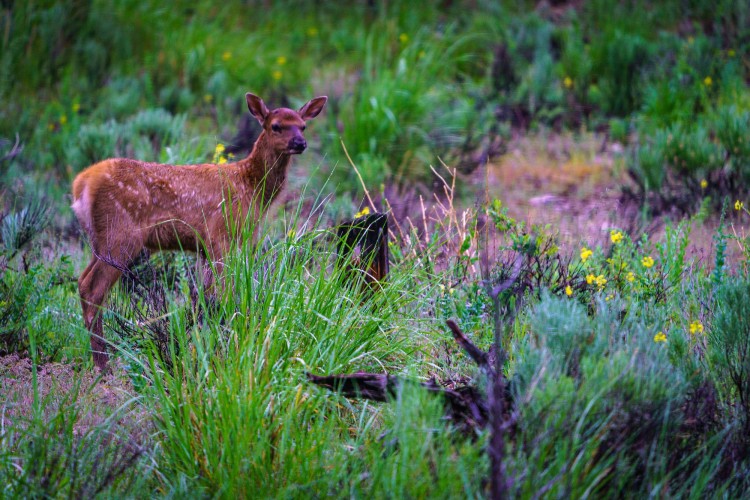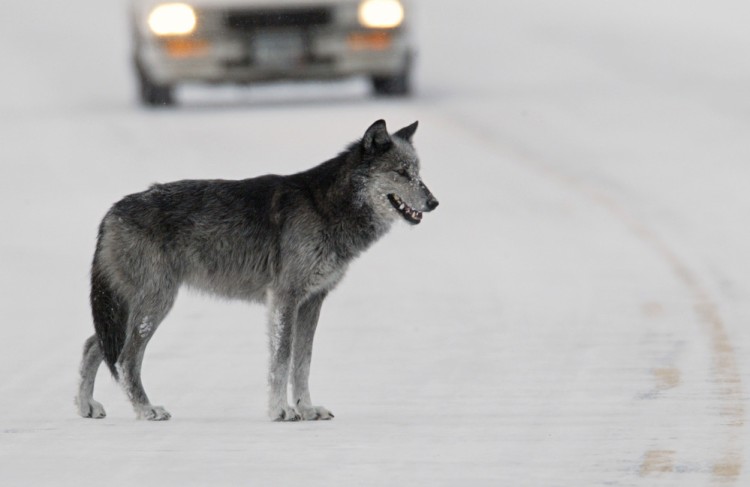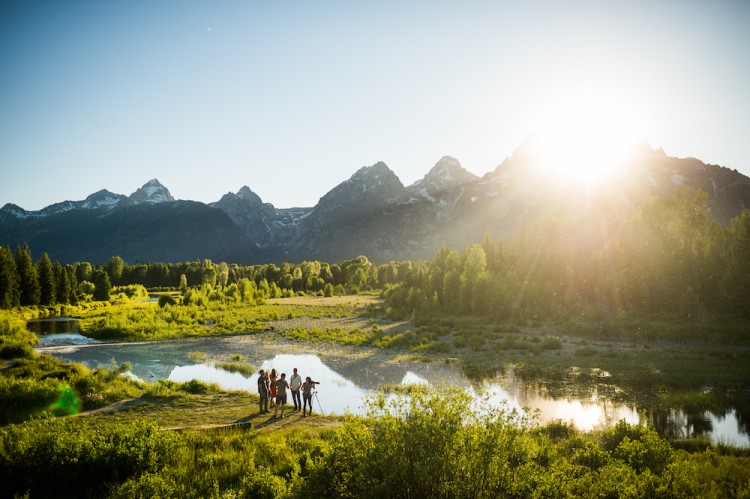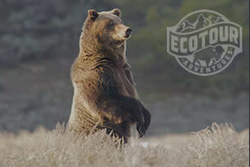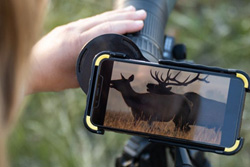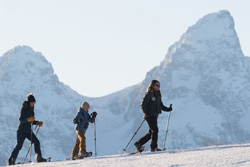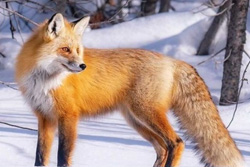Where to Watch the Elk Rut in Grand Teton and Yellowstone National Parks
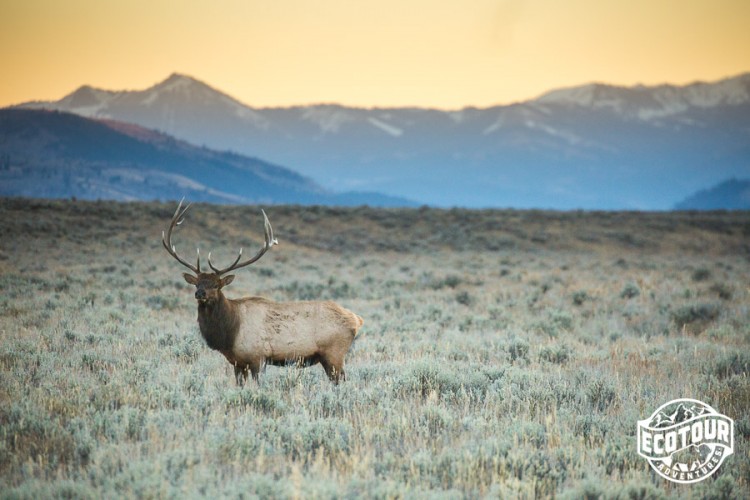

It’s a spectacle which occurs just once a year. Antlered giants emerge from dark timber and announce their dominance with a loud bugling call that echo's through golden aspen forests. The fall elk rut is here, offering wildlife enthusiasts an unparalleled opportunity to view this amazing behavior beneath the rugged peaks of Grand Teton and Yellowstone National Parks. It’s one of our favorite times of year, read on to learn why.
Why Spend the Energy Growing Antlers and Fighting?
The bugling of a bull elk represents the culmination of tens of thousands of years of evolution and adaptation to a harsh landscape. Locked in an evolutionary arms race with their dominant predator, the wolf, elk are just big enough and just fast enough to outpace wolves when healthy. With their larger size and dominant herd nature, elk outcompete smaller herbivores like deer, gaining access to the best forage areas throughout the year.
All of these adaptations are a result of sexual selection during the fall mating season. A bugle emits from a dominant bull, his challenge to other bulls and invitation to female herds. Should another bull respond to his call, the two may meet, standing broadside at a short distance, sizing the other up. Often the smaller bull will retreat, but if evenly matched the pair may lock antlers, wrestling in a test of strength. These sometimes deadly contests attract the attention of female elk who observe the spectacle, likely deciding which males to stay near when they reach estrus, or receptivity to mating.
Antler growth and physical competition for mating opportunities mean the best genes are passed onto the next generation who must face life in a challenging environment. We now know that bulls who keep antlers longer during the winter months can use them as effective weapons as well, decreasing their chances of predation.
However, this strategy is also paradoxical. Antlers are a major energy investment, forcing bulls to seek out riskier habitats for forage opportunities. The added weight also presents a challenge, adding up to over 30 lbs in large bulls!
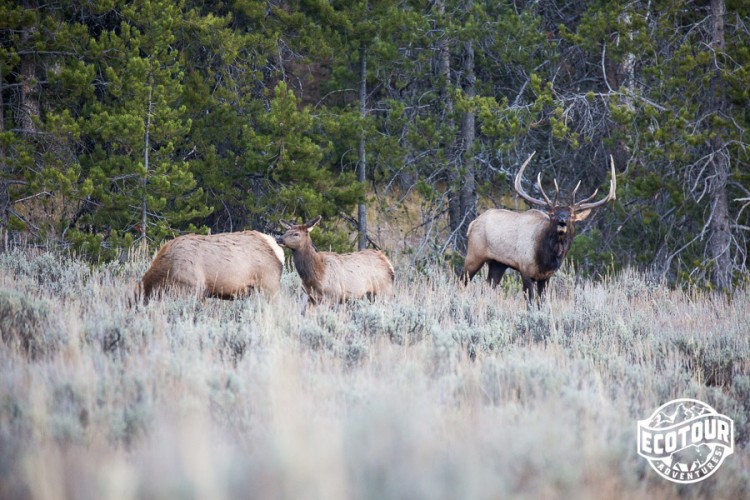
Bulls may lose up to 10% of their body weight during the fall mating season, females by comparison are still feeding during this time and put on up to 50lbs of fat in order to survive winter while carrying a full term pregnancy! As a result mortality from starvation, exposure, and predation is higher in winter for bulls than other classes of elk. Yet during the rut bulls seem blissfully unaware of all this, focused solely on pursuing cows and fighting other bulls.
Where to Find Bugling Elk and Other Wildlife in Wyoming
Though elk were historically found across the United States, today most populations, and viewing opportunities, are concentrated in the West. Grand Teton and Yellowstone, along with Rocky Mountain National Park in Colorado, offer up some of the best opportunities to easily view bugling elk. We’re biased in favor of the first two, who also offer opportunities to see grizzly bears, bison, and wolves, none of which are currently found in RMNP.
To find elk in Grand Teton we recommend starting your day before dawn and heading out to the base of the Teton Range. Elk tend to emerge in open meadows in the early hours of the morning before retreating into cover as the day warms. They will repeat the process in the evening as the sun sets over the mountains.
Elk are often viewed along the Madison River in Yellowstone, in the Hayden and Lamar Valleys and in the Mammoth area. Currently the Park preserves the green grass lawns of Historic Fort Yellowstone. This food source draws elk into the developed area of Mammoth Hotsprings, be careful to keep your distance of 25 yards or more as bulls have been known to charge people and vehicles during this time of year!
Wyoming's Wildlife Recreation Economy
Today thanks to decades of dedicated conservation work, the wildlife of the Greater Yellowstone Ecosystem occur at a greater abundance and diversity than any other time in the last 100 years. A recent study from the University of Wyoming values the Wildlife Recreation Economy at over $1 Billion annually, over 50% of which comes from wildlife watching in places like Grand Teton and Yellowstone.
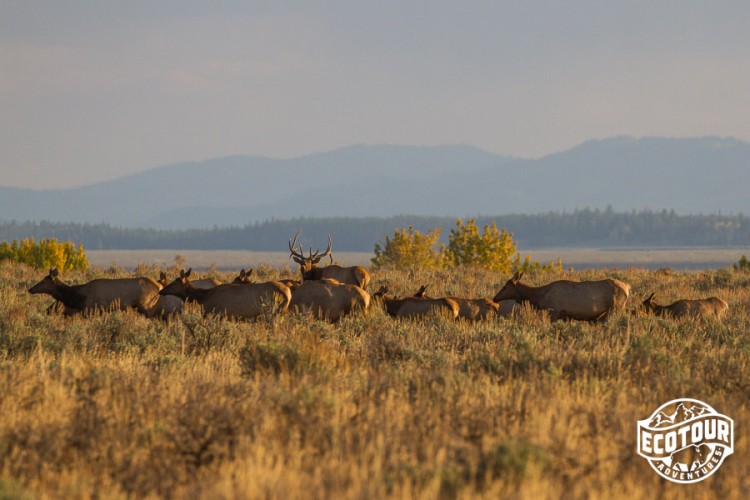
Hunting also remains an integral part of Wyoming culture and our economy. With abundant public lands, elk hunters are now pursuing bugling elk in hopes of filling their freezers with wild meat. It’s a largely sustainable practice, carefully managed to ensure a future for elk and the hunters who seek opportunities to interact with the wild.
Inside our National Parks, visitors from all parts of the world have an opportunity to enjoy bugling elk without hunting pressure, an intimate glimpse into an otherwise elusive behavior. At EcoTour Adventures we feel fortunate to live and work in a State where both are possible.
Please let us know if we can help with guiding your next adventure in Grand Teton or Yellowstone National Parks by calling us 307-690-9533 or emailing info@jhecotouradventures.com.
Jackson Hole Ecotour Adventures leads wildlife safaris, cross country skiing tours, and snowshoe tours in Grand Teton and Yellowstone National Parks 365 days a year. Let us help maximize your Jackson Hole Experience Today!





